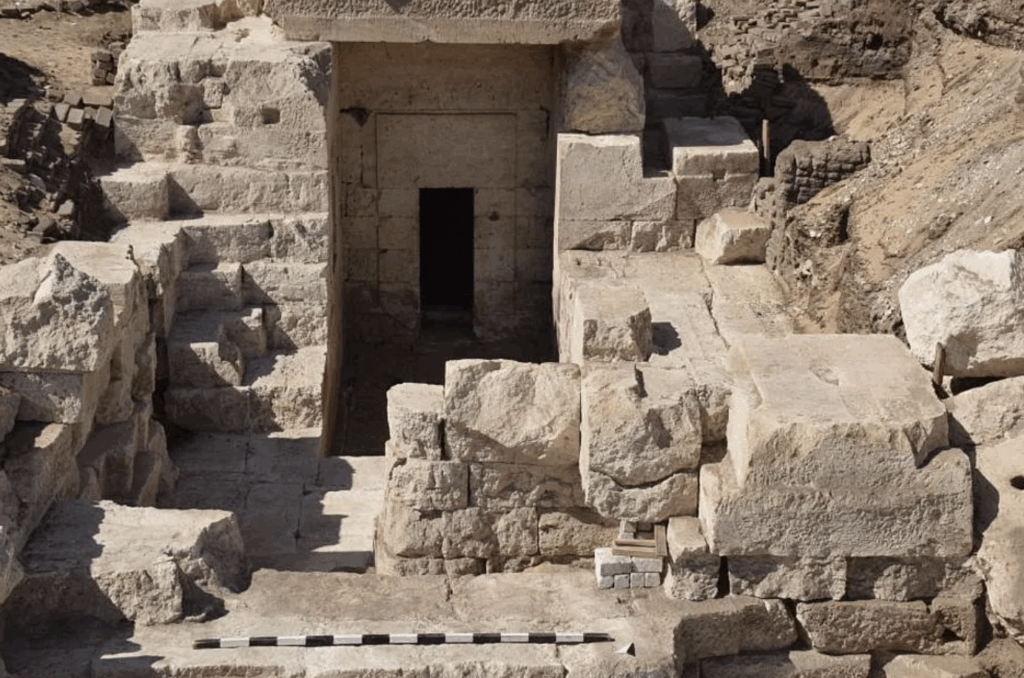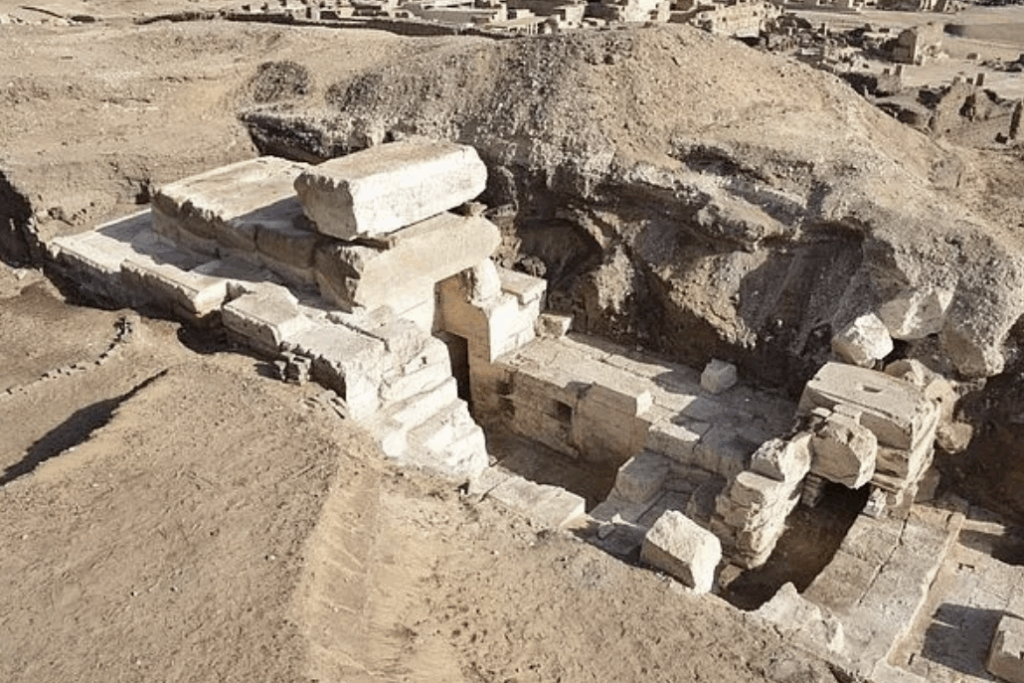Any of us who grew up watching Indiana Jones or Tomb Raider or any other TV show, movie, or book series about discovering lost places has probably dreamed of having their own archeological discovery at one point or another. For these scientists, that dream is coming true. Archaeologists have recently uncovered a hidden gateway to a 2,100-year-old temple built into a cliff face in Egypt. The stone structure is located in the ancient city of Athribis, about 125 miles north of Luxor.
Ancient Temple Discovered with Ornate Pylon Entrance and Hidden Secrets

The entrance to the over two thousand-year-old temple is quite ornate and a sight to behold in and of itself. Known as a pylon, the entrance features two towers flanking a main entrance. A team from the University of Tübingen in Germany discovered a second door on the pylon, which leads to a hidden staircase that once had at least four different flights. These flights led to an upper floor that has since been destroyed. Egyptologist and lead researcher Christian Leitz says that they still have not yet discovered what the name of this building is.
Intriguing Reliefs and Discoveries

The discoveries didn’t stop with the entrance hall, either. In the northern tower, the archeologist team uncovered reliefs depicting Egyptian King Ptolemy VIII offering sacrifices to Repit, the goddess of fertility, and her son Kolanthes. The goddess is distinct due to her having the head of a lion. They also found a hidden chamber measuring 20 feet long and 10 feet wide. The research discovered that this chamber once held temple utensils and amphorae jars. They then found more reliefs near the chamber’s entrance, including representations of the fertility god Min-Ra and decans. Decans were celestial figures used for timekeeping.
Unveiling the Mysteries of the Temple
The excavations of the temple have been ongoing for two years, and yet, many secrets, including its name and purpose, are still unknown. The excavations have revealed a larger temple district likely built between 144 B.C.E. and 138 C.E. The complex also includes a settlement area, the remains of a necropolis (an ancient cemetery), and millenia-old quarries, hinting that there is still more yet to be discovered about this temple. Sarah Symons and Juan Antonio Belmonte, two archaeologists who have worked in Egypt but not on this particular site, said “(the discovery of the temple entrance) is interesting but that more information on the temple and decans is needed.”
Continued Scientific Excavation

This is an ongoing project that will take quite some time to complete. As always, the excavation of ancient sites is a delicate process that requires careful attention to detail. If rushed, you could lose important aspects of the site and still-hidden artifacts forever. The archaeological team from the University of Tübingen plans to continue the scientific excavation, expecting more mysteries and revelations from this long-lost temple embedded in an Egyptian cliff face.
“The complete scientific excavation started with us and will last some time,” Leitz said. “We will not finish it this season.”
The Bottom Line
The discovery of this hidden temple entrance in Egypt highlights the ongoing fascination and importance of archaeological research in unraveling the secrets of ancient civilizations. As researchers delve further into the mysteries of this temple complex, more insights into Egypt’s rich cultural heritage are set to be revealed. This is certainly an exciting time to be a history buff, and we can’t wait to see more of what the scientists will discover.
Read More: Underwater ‘Pyramid’ May Rewrite Everything We Know About Ancient Civilizations

